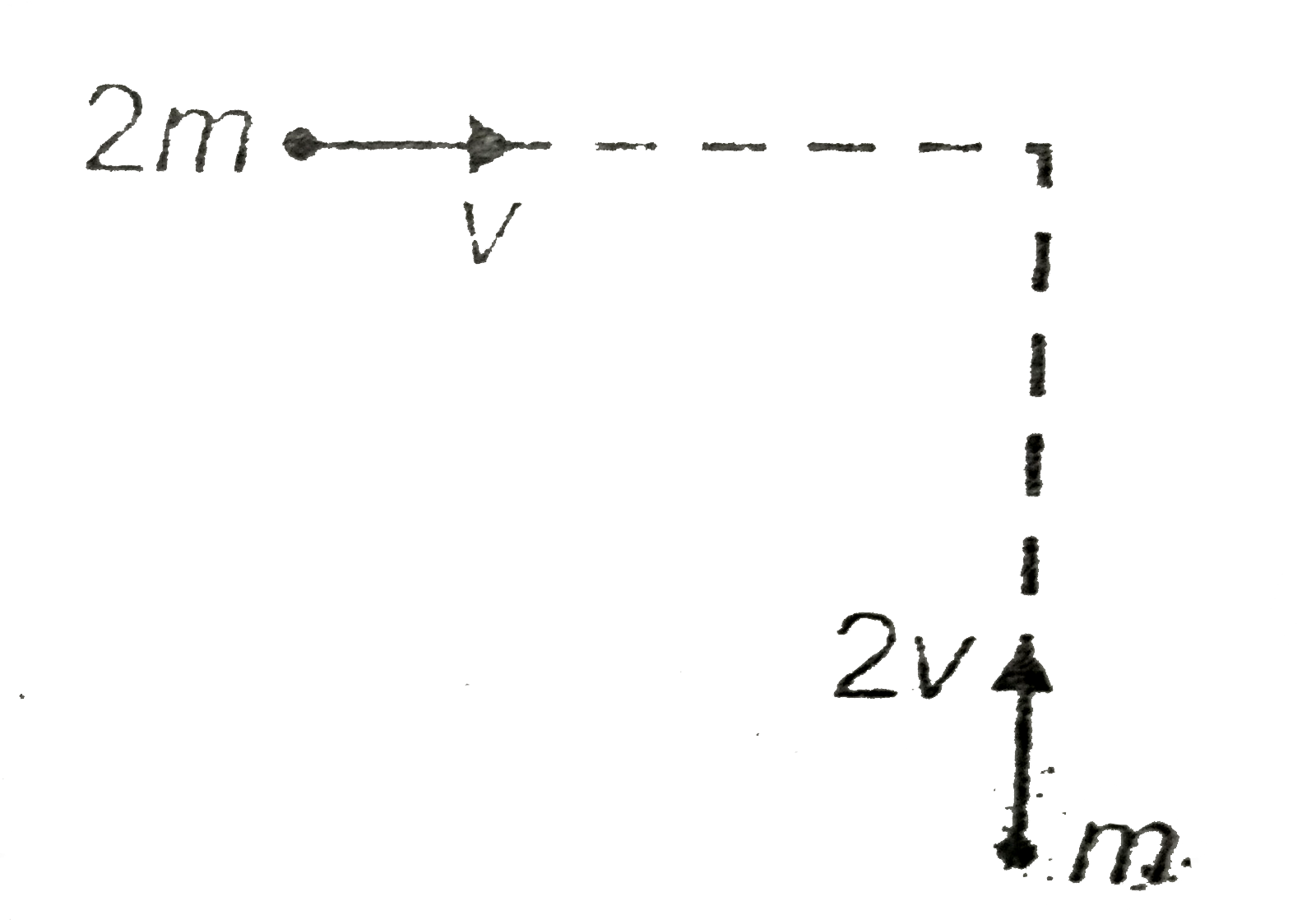Two balls of equal masses moving with equal speed in mutually perpendicular directions, stick together after collision. If the balls were initially moving with a speed of 30√2 ms^(-1) each, the speed of their combined mass after collision is
30 ms−1
15ms−1
30√2ms−1
30√2ms−1
The correct Answer is:B
To solve the problem step by step, we will apply the principles of conservation of momentum. Here’s how to approach the problem:
Step 1: Understand the scenario
We have two balls of equal mass (let's denote the mass of each ball as m) moving with equal speed in mutually perpendicular directions. The speed of each ball is given as 30√2ms−1.
Step 2: Set up the momentum before the collision
Since the balls are moving in perpendicular directions, we can analyze their momentum components separately.
- For Ball 1 moving in the x-direction:
p1x=m⋅v1=m⋅30√2
- For Ball 2 moving in the y-direction:
p2y=m⋅v2=m⋅30√2
Step 3: Calculate the total momentum before the collision
The total momentum of the system before the collision can be represented as a vector sum. Since the balls are moving at right angles, we can use the Pythagorean theorem to find the magnitude of the total momentum.
The total momentum in the x-direction is:
Px=m⋅30√2
The total momentum in the y-direction is:
Py=m⋅30√2
The magnitude of the total momentum P before the collision is:
P=√P2x+P2y=
⎷(m⋅30√2)2+(m⋅30√2)2
=
⎷2(m⋅30√2)2=m⋅30√2⋅√2=m⋅30
Step 4: Apply conservation of momentum
After the collision, the two balls stick together, forming a combined mass of 2m. Let v′ be the speed of the combined mass after the collision.
Using conservation of momentum:
Total momentum before=Total momentum after
m⋅30=2m⋅v′
Step 5: Solve for v′
We can cancel m from both sides (assuming m≠0):
30=2v′
v′=302=15ms−1
Conclusion
The speed of the combined mass after the collision is 15ms−1.
---
We have two balls of equal mass (let's denote the mass of each ball as m) moving with equal speed in mutually perpendicular directions. The speed of each ball is given as 30√2ms−1.
Since the balls are moving in perpendicular directions, we can analyze their momentum components separately.
p1x=m⋅v1=m⋅30√2
p2y=m⋅v2=m⋅30√2
The total momentum of the system before the collision can be represented as a vector sum. Since the balls are moving at right angles, we can use the Pythagorean theorem to find the magnitude of the total momentum.
Px=m⋅30√2
Py=m⋅30√2
P=√P2x+P2y=
⎷(m⋅30√2)2+(m⋅30√2)2
=
⎷2(m⋅30√2)2=m⋅30√2⋅√2=m⋅30
After the collision, the two balls stick together, forming a combined mass of 2m. Let v′ be the speed of the combined mass after the collision.
Total momentum before=Total momentum after
m⋅30=2m⋅v′
We can cancel m from both sides (assuming m≠0):
30=2v′
v′=302=15ms−1
The speed of the combined mass after the collision is 15ms−1.
Topper's Solved these Questions
Similar Questions
Calculate the de Broglie wavelength of a ball of mass 0.1kg moving with a speed of 30ms−1
View SolutionA ball moving with a speed of 9ms−1 strikes an identical stationary ball such that after the collision the direction of each ball makes an angle of 30∘ with the original line of motion. The speeds of two balls after the collision is
View SolutionTwo particles of equal masses moving with same momentum collide perfectly inelastically. After the collision the combined mass moves with half of the speed of the individual masses. The angle between the initial momenta of individual particle is
View SolutionTwo identical balls each moving with speed v at right angle to each other collide perfectly inelastically. Their speed after collision is
View SolutionA cart A of mass 50 kg moving at a speed of 20 km/h hits a lighter cart B of mass 20 kg moving towards it at a speed of 10 km/h. The two carts cling to each other. Find the speed of the combined mass after the collision.
View SolutionTwo particles of mass 2m and m moving with speed v and 2v respectively pependicular to each other collides perfectly inelastically, then

Speed of the particles after collision
View SolutionTwo identical balls moving in opposite directions with speed 20 m/s and 25 m/s undergo head on perfectly inelastic collision. The speed of combined mass after collision is
View SolutionTwo objects each of mass 5 kg are moving in the same straight line but in the opposite direction towards each other with some speed of 3 m/s. They stick to each other after collision. What will be the velocity of the combined object after collision?

View SolutionTwo balls roll towards each other. The red ball has a mass kg 0.5 kg and a speed of 4 m/s just before impact. The green ball has a mass of 0.3 kg and a speed of 2m/s. after the head-on collision, the red ball continues forward with a speed of 2m/s. find the speed of the green ball after the collision. was the collision elastic?
View SolutionA body of mass M moving with a speed u has a ‘head on’, perfectly elastic collision with a body of mass m initially at rest. If M>>m , the speed of the body of mass m after collision, will be nearly :
View Solution
